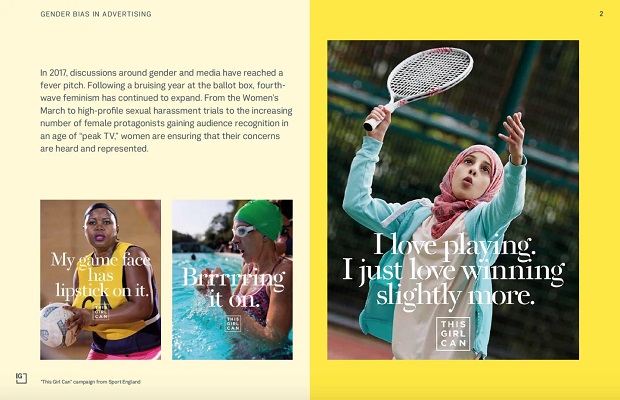Women are still being ignored in ads in favour of men, according to a new study released at Cannes.
New joint research from The Geena Davis Institute on Gender in Media at Mount Saint Mary’s University and J. Walter Thompson New York, in collaboration with University of Southern California’s Viterbi School of Engineering, analysed more than 2,000 films from the Cannes Lions archive (English language only).
It reveals that men get about four times as much screen time as women and speak about seven times more than women.
Our Women’s 2016 Index, part of its Female Tribes initiative, revealed that “85% of women said that when it comes to representing them, the advertising world needs to catch up with the real world.”
The new research, called Unpacking Gender Bias in Advertising, shines a new light on this finding.
• There are twice as many male characters in ads than female characters.
• 25% of ads feature men only, while only 5% of ads feature women only.
• 18% of ads feature only male voices, while less than 3% of ads featuring female voices only.
2006 to 2017: The trends of female presence and portrayal in ads have not changed
over a decade.
Overall, men are present on screen more than women across all ad categories and the measurements of female representation in commercials (number of characters, time on screen, speaking time, etc.) have not improved in over a decade.
Supporting the automated analysis, the Geena Davis Institute on Gender in Media research team conducted additional research, identifying age, location, objectification, and other personal characteristics associated with prominent characters. This analysis was based on verbal, physical, occupational, and social cues plus other factors.
Age: Women in ads are mostly in their 20s while men are in their 20s, 30s, and 40s. This means male characters are far more diverse than female when it comes to age. Humor: Men are almost twice as likely to be funny than women.
Objectification: One-in-ten female characters are shown in sexually revealing clothing – six times the number of male characters. Intelligence: when it comes to characters for whom intelligence is an integral part of their character (e.g., a doctor, a scientist), men are 62% more likely to be shown as smart.
Location: Women are 48% more likely to be shown in the kitchen while men are 50% more likely to be shown at a sporting event.
Work: One in three men are shown with an occupation compared to one in four women.
Industry analysis
Josh Krichefski, MediaCom CEO, commented on the issue: “These figures really highlight how under- and misrepresented women are in adverts. Advertising has come a long way since the Mad Men-style male whitewash of the 1950s, but there is clearly a very long way to go. It’s the responsibility of everyone in the media – from agencies to publishers and brands – to make changes and address this issue.
“Women make up roughly half of the population, but when you hear that there are twice as many male characters in ads than there are female (and a quarter of ads feature men only, compared to 5% featuring women only), something doesn’t quite add up. Unfortunately, this is all too often reflected in the workplace. Organisations should be putting this issue at the top of the agenda, creating a business that fuels a culture of equality, diversity and inclusion. At MediaCom, we’ve even set ourselves a challenge of improving our diversity stats by 10% this year. Simply, equality and diversity need to be a business imperative, not a secondary objective.”
Madeline Di Nonno, CEO, Geena Davis Institute on Gender in Media, added: “By changing the narrative, the images we use, the stories we tell about women, we can dramatically change the way the world values women and how women and girls see themselves. It’s not enough to portray more women. We need a more progressive and inclusive representation of women.”
Brent Choi, Chief Creative Officer, J. Walter Thompson New York: “What this research shows is that our industry has tent-pole moments, amazing actions or campaigns when we all rally around women, but when it comes to creating our ‘regular’ ads for our ‘regular’ clients, we forget about them.”
Shri Narayanan, Niki & C. L. Max Nikias Chair in Engineering, University of Southern California: “Technology advances in data sciences and machine learning give us new ways of shining light on media content, at scale and with an unprecedented level of detail and accuracy. It can give us novel insights not just by eliminating the mystery about potential unconscious biases in content but in offering objective tools to shape content”
The new research uses the Geena Davis Institute for Gender in Media’s GD-IQ, an Automated Analysis Tool, funded by Google.org, developed to analyze audio and video media content through machine learning and audio-visual processing technologies from Google and the University of Southern California.
The research was led by the Institute and J. Walter Thompson, and conducted by Dr. Shri Narayanan, Krishna Somadepalli and the team of Engineers at the University of Southern California’s Signal Analysis and Interpretation Laboratory (SAIL), in collaboration with Dr. Caroline Heldman and the team of researchers at the Geena Davis Institute on Gender in Media.

